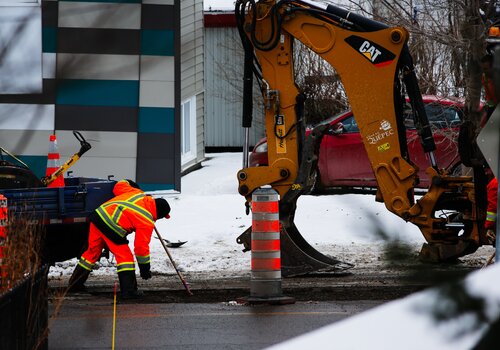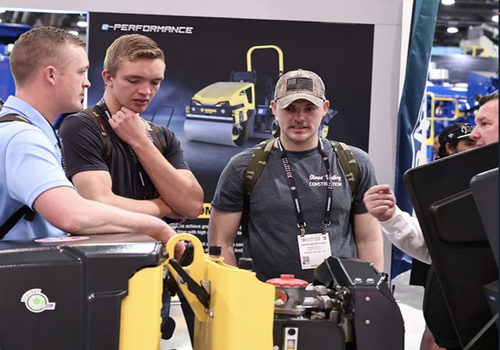As a kid, John Dowling was rarely seen without his yellow Tonka dump truck. It went everywhere with him through dirt, gravel and mud. Then one day, the truck he thought was indestructible was accidentally ran over by his father’s friend in their driveway, destroying his beloved possession and leaving him devastated. Instead of consoling him, his father asked, “Do you have insurance?”
That moment stuck with John his entire life. It wasn’t about insurance; it was about understanding the reality of it. No matter how tough or sturdy something seems, everything mechanical will inevitably fail. Whether it’s a toy truck or a $500,000 piece of equipment, it’s going to malfunction. What matters most is how people respond to the damage.
That lesson laid the foundation for how John now helps contractors and equipment managers prepare for the inevitable and manage it effectively.
John will unpack the complexities of the service world and turn them into simple, actionable steps at CONEXPO-CON/AGG 2026 in his session, From Downtime to Uptime: Fixing the Broken Service Process in Construction Fleets. Read on to preview how to spot bottlenecks, strengthen accountability and build a culture of excellence in your service operation.
WHERE THE REAL BATTLE IS WON OR LOST
For John, the service department of any construction dealership can make or break the business. “When machines are down, everyone loses: the contractor, the dealership and, ultimately, the customer waiting for a road, bridge or new home,” he says. Downtime can impact profits, delay schedules and strain relationships.
After more than 30 years in the industry, Dowling learned a method of surviving these moments through a process. “Service isn’t just about fixing equipment,” he shares. “It’s about managing a process that can be broken down, measured, improved and optimized.” To him, it’s not just a department but a discipline. Many companies overlook its potential, not realizing the service operation can determine a project’s success.
FROM PHILOSOPHY TO PROCESS: THE BIRTH OF “SERVICE BY THE BOXES”
John spent some of his career as an executive of a 10-location dealership, where he noticed a problem. In the chaos of pending orders and overworked technicians, there lied a solution that was being overlooked.
The realization led John to write Service by the Boxes, a simplified way to turn service operations into manageable steps. The idea can be tied to 17th century philosopher René Descartes, who believed complex problems can only be solved by dividing them into smaller parts. John applied the same principle to construction operations. “Service is big, complicated and easy to mismanage,” he says. “But when you break it down into simple, logical steps or what I call ‘boxes,’ it becomes understandable, teachable and manageable.”
What started with the goal of helping service managers gain control of their departments, has become something more impactful. John call it “a philosophy, a methodology, a process and ultimately a culture.”
BREAKING SERVICE DOWN BOX BY BOX
Over the course of his career, Dowling discovered the process can be divided into 10 boxes, or stages, that every piece of work must pass through from inception to completion. Each box represents a checkpoint that keeps the work moving forward.
The problem, he believes, is most dealerships and construction companies don’t clearly define, assign or track these actions. “You can’t hold someone accountable for what they’ve never been trained or told to do,” he explains. “Accountability requires clarity, and clarity starts with understanding the required action that moves a job from one box to the next.”
For example, when a job reaches the “to be estimated” box, a service manager should be using flat-rate codes to determine how long the task will take. When the responsibilities are clear, managers can define expectations, measure performance and identify inefficiencies.
“The principles of service management are universal,” John says. “Define the steps, clarify the actions, assign responsibility and manage progress box by box.
FIXING THE BOTTLENECKS
Every service operation, no matter its strength, has a bottleneck where progress slows and frustration builds. It could be pending approvals, parts availability or technician capacity. John’s guide helps professionals identify weak points and eliminate them before they impact business.
“When you understand your boxes, you can pinpoint where the bottleneck lies and fix it,” he explains. “That’s where real performance gains are made.”
To him, time is money. “Every hour a machine sits idle represents lost production, lost profit and lost opportunity,” he says. “A well-managed service process maximizes uptime, keeps projects on schedule and drives profitability across the board.”
John will dive deeper into these methods during his CONEXPO-CON/AGG session, providing the tools needed for a service to operate efficiently.
CREATING A CULTURE OF ACCOUNTABILITY
For John, a great service process is just a piece of the puzzle. The real transformation happens when people develop a sense of ownership. “When every box, step and action is defined, accountability naturally follows,” he shares. “And when accountability takes hold, people start taking ownership of their results.”
This mindset shift welcomes more efficient technicians, improved communication and customer satisfaction. The “boxes” format isn’t exclusive to service; it can be applied in leadership capacities improving workflow, scheduling and communication.
FROM THE SHOP FLOOR TO THE EXECUTIVE SUITE
A best-in-class service department isn’t built by chance; it’s built by design. John’s experience proves successful leaders understand the process, coach their teams and measure performance consistently.
Whether it’s a dealership, rental fleet or construction company’s maintenance operation, the principles can be applied. As John says, “When the equipment is running, the company is winning.”
John Dowling will show others how to break the service process into simple, actionable steps in the session From Downtime to Uptime: Fixing the Broken Service Process in Construction Fleets at CONEXPO-CON/AGG 2026 in Las Vegas.
Photo Credit: John Dowling












